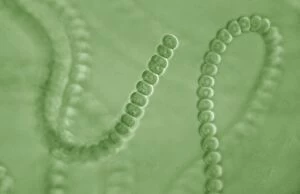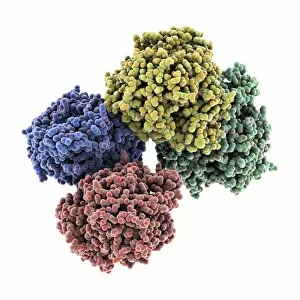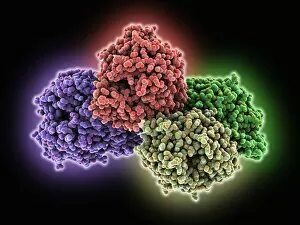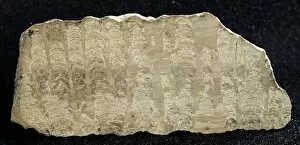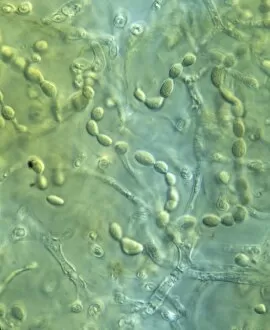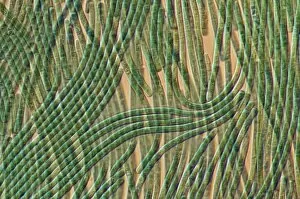Cyanobacterium Collection
"Cyanobacterium: The Masters of Oxygen Production and Timekeeping" In the vast realm of microscopic life
For sale as Licensed Images
Choose your image, Select your licence and Download the media
"Cyanobacterium: The Masters of Oxygen Production and Timekeeping" In the vast realm of microscopic life, cyanobacteria stand out as remarkable organisms that have shaped our planet for billions of years. Picture No. 11675589 captures their intricate beauty under a microscope, showcasing their diverse forms and colors. One fascinating aspect of cyanobacteria is their ability to produce retinal, an essential pigment for vision in animals. The retinal-producing oxygenase enzyme C015/7150 and C015/7151 play a crucial role in this process, unlocking the secrets behind these tiny creatures' visual prowess. But cyanobacteria are not just masters of pigmentation; they also possess an internal clock known as the cyanobacterial circadian clock protein. This biological timekeeper allows them to anticipate daily changes in light and adjust their metabolic activities accordingly. Nature's artistry comes alive with colonies like Nostoc commune after rain (C015/6232), forming mesmerizing patterns on rocks or soil surfaces. These colonies serve as miniature ecosystems, harboring various species within them. Stromatolites take us back in time to Earth's ancient past when these layered structures dominated shallow waters worldwide. Australia showcases some stunning stromatolites, such as those found at Hamelin Pool Marine Nature Reserve – living relics from a bygone era (Stromatolites, Australia). These resilient organisms played a pivotal role in shaping our planet's atmosphere by producing copious amounts of oxygen through photosynthesis. Without them, life as we know it would not exist today. Nostoc sp. , another member of the cyanobacterial family, thrives across diverse habitats globally – from deserts to freshwater bodies – displaying its adaptability and survival skills against all odds. As we delve into the world of cyanobacteria through these captivating images and scientific insights, let us marvel at nature's ingenuity that these microscopic powerhouses possess.

